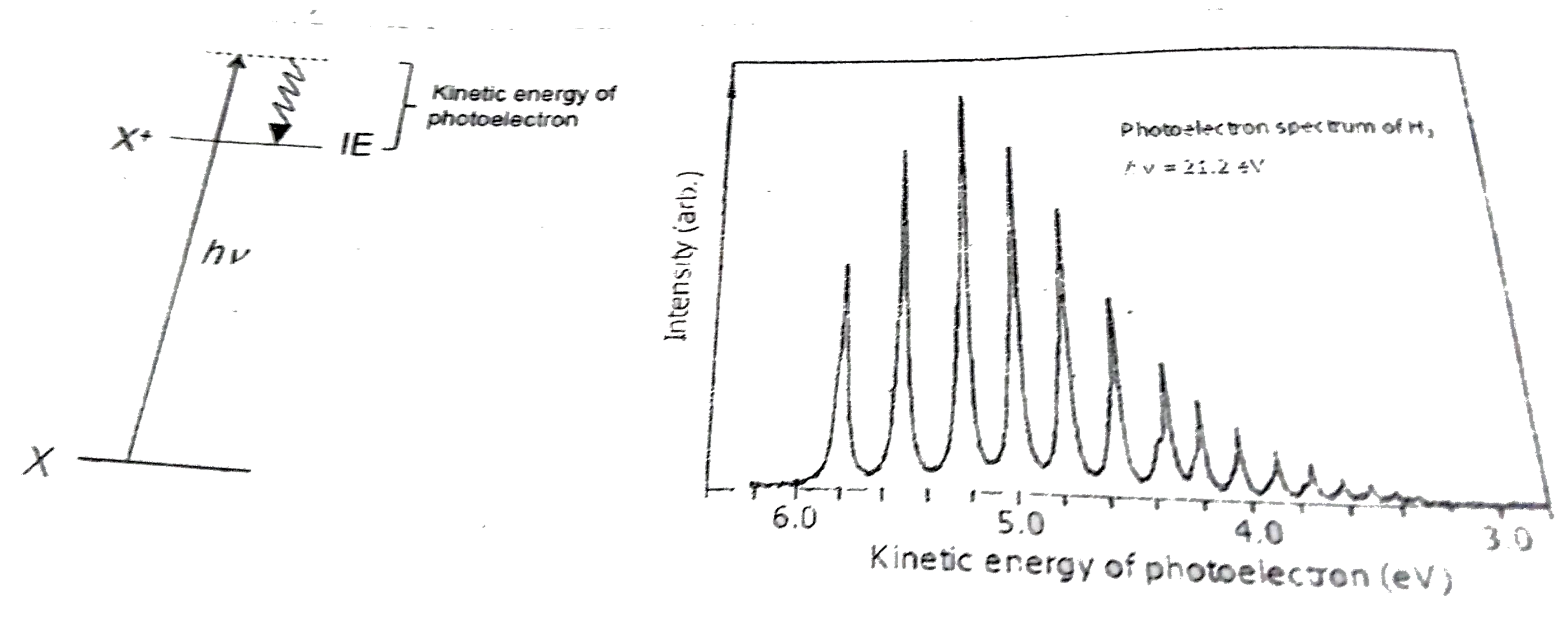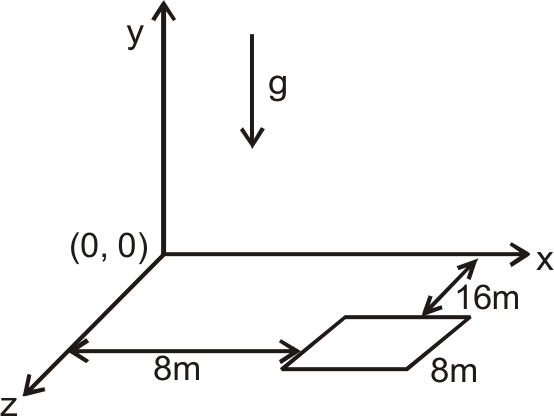Figure shows sequence of large number of photograph of on object moving vertically under gravity. A motion picture of this photograph is run backward.
∘∘∘∘∘∘∘
Statement-1: In time reversal sequence the gravitational acceleration will appear to be upward.
Statement-2: A time reversal operation changes every →v→−→v.
If both A and B are true and R is the correct explanation of A
If both A and R are true but R is not correct explantion of A
If A is true but R is false
If A is false but R is true
The correct Answer is:D
Step by step video, text & image solution for Figure shows sequence of large number of photograph of on object moving vertically under gravity. A motion picture of this photograph is run backward. overset(circ)overset(circ)overset(circ)overset(circ)overset(circ)overset(circ)(circ) Statement-1: In time reversal sequence the gravitational acceleration will appear to be upward. Statement-2: A time reversal operation changes every vec(v)to -vec(v). by Physics experts to help you in doubts & scoring excellent marks in Class 11 exams.
Updated on:21/07/2023Topper's Solved these Questions
- MOTION IN A STRAIGHT LINEBOOK - GRB PUBLICATIONCHAPTER - MOTION IN A STRAIGHT LINEEXERCISE - Matrix -match
4 Videos
- MOTION IN A STRAIGHT LINEBOOK - GRB PUBLICATIONCHAPTER - MOTION IN A STRAIGHT LINEEXERCISE - Integer
5 Videos
- MOTION IN A STRAIGHT LINEBOOK - GRB PUBLICATIONCHAPTER - MOTION IN A STRAIGHT LINEEXERCISE - More than one choice is correct
16 Videos
- FRICTION AND CIRCULAR MOTION BOOK - GRB PUBLICATIONCHAPTER - FRICTION AND CIRCULAR MOTION EXERCISE - Comprehension type
11 Videos
- MOTION IN TWO AND THREE DIMENSIONSBOOK - GRB PUBLICATIONCHAPTER - MOTION IN TWO AND THREE DIMENSIONSEXERCISE - All Questions
210 Videos
Similar Questions
If ∑r=18sin((2r−1)π36)∏6k=0cos(2k.π36)=2ntan140∘, (where n∈N) then ' n^prime is endarray
View SolutionWhen an atom X absorbs radiation with a photon energy than the ionization energy of the atom, the atom is ionized to generate an ion X+ and the electron (called a photoelectron) is ejected at the same time. In this event, the energy is conserved as shown in Figure 1, that is,
Photon energy (h)=ionization energy (IE) of X+ kinetic energy of photoelectron.
When a molecule, for example, H2, absorbs short-wavelength light, the photoelectron is ejected and an H2, ion with a variety of vibrational states is produced. A photoelectron spectrum is a plot of the number of photoelectrons as a function of the kinetic energy of the photoelectrons. Figure-2 shows a typical photoelectron spectrum when H2 in the lowest vibrational level is irradiated by monochromatic light of 21.2eV. No photoelectrons are detected above 6.0eV. (eV is a unit of energy and 1.0eV is equal to 1.6×10−19J)

Figure 1 Schematic diagram of photoelectron spectroscopy.
Figure 2 Photoelectron spectrum of H2. The energy of the incident light is 21.2eV
Calculate––––––––––– the threshold energy EE (eV) of the following dissociative reaction to the first decimal place:
H2→H∗(n=2)+H++e−
If you were unable to determine the values for EB and EC, then use 15.0eV and 5.0eV for EB and EC respectively.
When H2 absorbs monochromatic light of 21.2eV, the following dissociation process occurs at the same time.
H221.2eV−−−→H(n=1)+H(n=1)
Two hydrogen atoms move in opposite direction with the same speed.
View Solution
Knowledge Check
A moving perticle of mass m is acted upon by five forces →F1,→F2,→F3,→F4 and →F5. Forces →F2 and →F3 are conservative and their potential energy funcations are U and W respectively. Speed of the particle changes from Va to Vb when it moves from position a to b. Choose the correct option :
ASum of work done by →F1,→F4 and →F5=Ub−Ua+Wb−WaBSum of work done by →F1,→F4 and →F5=Ub−Ua+Wb−Wa+12m(V2b−V2a)CSum of work done by all five forces =12m(V2b+V2a)DSum of work done by →F2 and →F3=(Ub+Wb)−(Ua+Wa)For a reversible reaction Ak1=4×102s−1⇐======⇒k2=2×102s−1B initial concentration of A is 21 mol L−1 . Select the correct statement:
AEquilibrium concentration of A is 14 mol L−1BEquilibrium conentration of B is 14 mol L−1.CThe concentration of A reduce by 50% of equilibrium concentration after 11.55 sec .DThe concentration of A reduce to 50% after 23.1 sec.A square platform of side length 8m is is situated in x−z plane sucha that it is at 16m form the x-axis and 8m from the z-axis as shown in figure. A particle is projected with velocity →v=(v2^i+25ˆj)m/s relative to wind form origin and at the same instant the platform starts with acceleration →=(2ˆi+2.5ˆj)m/s2. Wind is blowing with velocity v1ˆk.g=10m/s2

ListIList II(P)Least possible values of V2(in M/s) so that particle hits the platform or edge of platfrom is(1)4(Q)Least possible values of v1(in m/s) so that particle hits the platform or edge or platform is (2)6(Q)If t is the time (in seconds) after particle hits the platform then 2t is equal to (3)8(S)Value of displacement with respect to ground (in m) of the particle in y-direction , when v2 has its minimum possible value is (till particle hits the platform or edge of platform)(4)20APQRS(A)2431BPQRS(B)2134CPQRS(C)2341DPQRS(D)2143
Define 'activity' of a radioactive material and write its S.I.unit.
(ii) Plot a graph showing variation of activity of a given radioactive sample with time.
(iii) The sequence of stepwise decay of a radioactive nucleus is Dα−−→D1β1−−→D2.
If the atomic number and mass number of D2 are 71 and 176 respectively, what are their corresponding values of D?
View SolutionIf an element can exist in several oxidation states, it is convenient to display the reduction potentials corresponding to the various half reactions in diagrammatic from, known as Latimer diagram. The Latimer diagram for chlorine in acid solution is
Cl−4+1.20V−−−−→ClO−3+1.60V−−−−→ClO−2+1.60V−−−−→
ClO−+1.67V−−−−→Cl2+1.36V−−−−→Cl−
In basic solution is :
ClO−4+0.37V−−−−→ClO−3+0.30V−−−−→ClO−2+0.68−−−→
ClO−+0.42V−−−−→Cl2+1.36−−−→Cl−. The standard potentials for two nonadjacent species can also be calculated by using the concept that ΔG∘ is an additive property but using potential is not an assitive property and ΔG∘=−nFx0, If a given oxidation state is a the next higher oxidation state disproportionation can occur. The reverse of relative stabilities of the oxidation state can also be understood by drawing a graph of ΔG∘/F against oxidation state, known as Frost diagram, Choosing the stability of zero oxidation state arbitrery as zero. The most stable oxidation state of a apecies lies lowest in the digram Disproportionation is spontaneous if the species lies above a straight line joining its two product species.
Which of the following statement is correct according to above question ?
View SolutionIf an element can exist in several oxidation states, it is convenient to display the reduction potentials corresponding to the various half reactions in diagrammatic from, known as Latimer diagram. The Latimer diagram for chlorine in acid solution is
Cl−4+1.20V−−−−→ClO−3+1.60V−−−−→ClO−2+1.60V−−−−→
ClO−+1.67V−−−−→Cl2+1.36V−−−−→Cl−
In basic solution is :
ClO−4+0.37V−−−−→ClO−3+0.30V−−−−→ClO−2+0.68−−−→
ClO−+0.42V−−−−→Cl2+1.36−−−→Cl−. The standard potentials for two nonadjacent species can also be calculated by using the concept that ΔG∘ is an additive property but using potential is not an assitive property and ΔG∘=−nFx0, If a given oxidation state is a the next higher oxidation state disproportionation can occur. The reverse of relative stabilities of the oxidation state can also be understood by drawing a graph of ΔG∘/F against oxidation state, known as Frost diagram, Choosing the stability of zero oxidation state arbitrery as zero. The most stable oxidation state of a apecies lies lowest in the digram Disproportionation is spontaneous if the species lies above a straight line joining its two product species.
Which of the following statement s correct ?
View SolutionIf an element can exist in several oxidation states, it is convernient to display the reduction potentials correspondingg to the various half reactions in diagrammatic form, know as latimer diagram the latimer diagram for chlorine in acid solutio is
CIO−4+1.20V−−−−→CiO−3+1.18V−−−−→HClO2+1.60V−−−−→HClO1.67V−−→Cl21.36V−−→Cl− in basic solution.
ClO−40.37V−−→ClO−30.30V−−→ClO−20.68V−−→ClO−0.42V−−→Cl21.36V−−→Cl− The standard potentials for two nonadjacent species can also be calculateed by using the concept that △G∘ as an additive property but potential is not an additive property and △G∘=−nFx0. if a given oxidation stateis a stronger oxidising agent than the next higher oxidation state, disproportionation can occur. The reverse of disproportionation is called comproportionation. The relative stabilities of the oxidation state can also be understood by drawing a graph of △G∘/F against oxidation state, known as frost diagram, choosing the stability of zero oxidation state arbitrarily as zero. The most stable oxidation state of a species lies lowest in the diagram, disproportionation is spontaneous if the species lies above a straight line joining its two product species.
Q. Which of the following statement is correct?
View SolutionIf an element can exist in several oxidation states, it is convernient to display the reduction potentials correspondingg to the various half reactions in diagrammatic form, know as latimer diagram the latimer diagram for chlorine in acid solutio is
CIO−4+1.20V−−−−→CiO−3+1.18V−−−−→HClO2+1.60V−−−−→HClO1.67V−−→Cl21.36V−−→Cl− in basic solution.
ClO−40.37V−−→ClO−30.30V−−→ClO−20.68V−−→ClO−0.42V−−→Cl21.36V−−→Cl− The standard potentials for two nonadjacent species can also be calculateed by using the concept that △G∘ as an additive property but potential is not an additive property and △G∘=−nFx0. if a given oxidation stateis a stronger oxidising agent than the next higher oxidation state, disproportionation can occur. The reverse of disproportionation is called comproportionation. The relative stabilities of the oxidation state can also be understood by drawing a graph of △G∘/F against oxidation state, known as frost diagram, choosing the stability of zero oxidation state arbitrarily as zero. The most stable oxidation state of a species lies lowest in the diagram, disproportionation is spontaneous if the species lies above a straight line joining its two product species.
Q. Which of the following statement is correct?
View Solution
